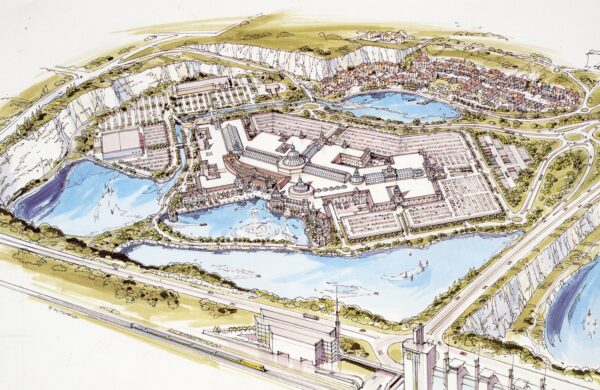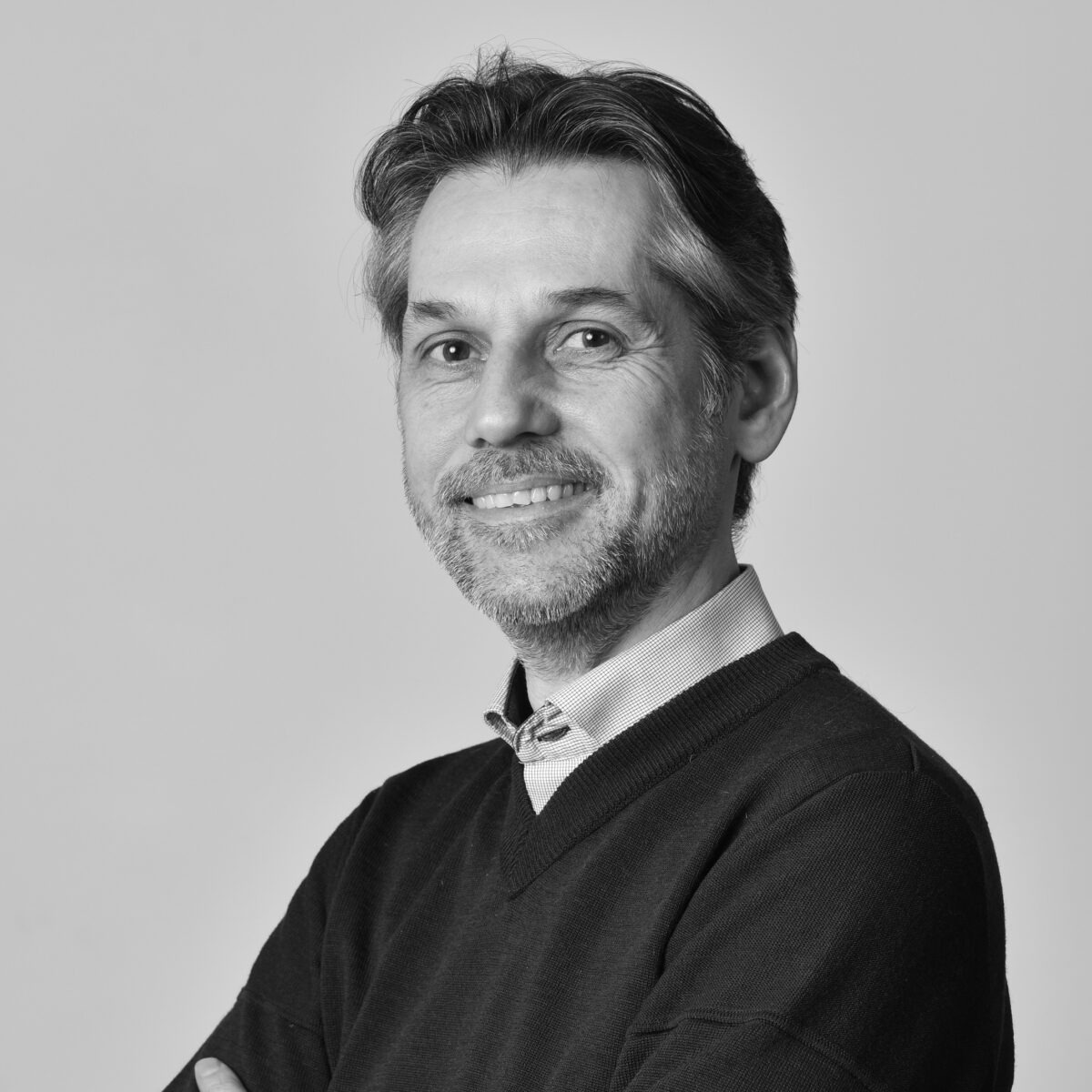Executive Director of Architecture Mike Wilson-MacCormack delves into the concept of creating lasting value through the lens of Benoy’s integrated design approach.
Return to Future ThinkingA playbook for designing impact with Mike Wilson-MacCormack

As a designer, I’m often asked about the meaning of impactful design. To me, impact means value – and at Benoy, we use design to create value. Working extensively in the global commercial sector, this notion often relates to commercial value, namely, creating a return on investment, but we only achieve this if we, as designers, have first considered the needs of our audience. Many of our end users are consumers – well-travelled, well informed and keenly discerning. Consequently, success means creating an asset that these astute individuals consciously choose over others. Today’s world is anything but predictable; tried-and-tested solutions just don’t cut it.
At Benoy, we utilise design skills to shape destinations that are both memorable and meaningful. Creating engaging experiences is a pivotal aspect of that. As online lifestyles render almost everything instantaneously accessible, design is the business of keeping the physical world interesting through personal, tangible experiences – it’s the only way to compete with digital.
To do this, it’s imperative to shift our perspective to see through the eyes of those we’re designing for – guests, diners, passengers, residents, families, people of all ages, from all walks of life. We ask ourselves, ‘What is the experience we are creating? Is it unique? Is it true to its location? Does it speak to people’s values?’ User-focused design is an essential aspect of Benoy’s USP – and has been since we first introduced the concept in the late 1990s.

Driving commercial impact
It all started with Bluewater. Celebrating its 25th anniversary this year, this landmark shopping centre remains as relevant today as it was revolutionary then, the trophy asset of its owners – all because we asked questions that designers hadn’t been asking before. Bluewater was seminal for Benoy. It marked the first project we put ourselves in the shoes of the end user to design meaningful impact – something we have done ever since.
We already knew it was going to be the largest retail project in Europe – but being big wasn’t enough. In fact, its size posed a challenge. Shoppers would be committing to a vast space with 300 stores, walking up to a kilometre to find what they needed. For the first time, our company contemplated the mindset of the people arriving – and the stress that might be involved. Using design, we had to ensure our audience started their day at Bluewater in a great frame of mind.
So, we unlocked value with a series of ‘villages’ curated with retail, leisure and dining that targeted specific segments of people, rather than one blanket audience. We devised concepts that were just as important as the retail space, such as welcome halls, family facilities and luxurious washrooms. More than the leasable floorspace, these features represented where value would be accrued, because we were meeting people’s needs.
An industry first, we also spearheaded the phrase, ‘dwell time’. As considered design can increase the time people want to spend in a space, we realised that great design creates great value – value meaning time well spent as well as commercial impact.
A global perspective
Let’s fast-forward 20 years, swapping a chalk pit in Kent for a carpark in Dubai. This would become The Beach, a mixed-use design solution that is ostensibly very different to Bluewater yet rooted in the same approach.
The site was accessible public waterfront – a rare thing in Dubai, where most beachside locations belong to hotels or private residences. This posed an exciting opportunity to create value by ‘gifting’ this space back to the public. We wanted The Beach to offer what Dubai’s ubiquitous, one-dimensional shopping experiences couldn’t – a place for socialising and family, encouraging longer dwell times whilst connecting to the desert climate and waterside views. Rather than bringing people to an enclosed shopping centre, we challenged traditional retail formats with a permeable, open-sky, coastal ‘resort’ curated with brand showcasing, leisure and eateries, where a great day out came with the luxury of promenading on the beach.
The Beach is an incredible tourist magnet because it is so engrained in its surroundings. We could have easily taken an international point of view with homogenised air-conditioned buildings with no connection to the outside environment, but I don’t believe that’s what people want now. They want to feel connected to landscape and setting in a sensual, tactile way. A project like The Beach demonstrates that the spaces between buildings – where people can relax and socialise – can prove more significant than the actual buildings themselves.
Expanding on this, we at Benoy understand that solutions often exist within an integrated design approach. Going beyond architecture, we shape innovative responses that reflect the landscape, public realm, climate, culture, and people’s behaviour. That’s part of our DNA. Our strategists generate data to enable our designers to understand challenges at a much deeper level, even if it means challenging commonly-held perceptions – or even client briefs.
Unlocking potential
A more personal reflection takes me back to 2012, when we were redesigning Wokingham town centre, an area lacking investment and losing market share. Our team did a huge amount of local consultation to establish what mattered to the people who would live, work and play in the finished space. Our plan was to recapture the sense of pride and community that had been lost, whilst also retaining spend.
I could talk here about the buildings we designed, but what we really created was a two-acre park surrounded by a curated community, where homes, local retailers and restauranteurs effectively restored social cohesion. Town events were reintroduced, giving Wokingham the ability to celebrate itself again.
Coincidentally, the new development opened in March 2020, days before lockdown. We could have never anticipated how important that town centre was going to be during Covid-19, when spaces promoting social value would offer a lifeline for people driven into isolation. Wokingham is the perfect illustration of defining physical solutions to meet the needs of those who inhabit the spaces we create.
Interestingly, we’re about to do this again in November, when we further expand our global portfolio with the opening of a new shopping centre on India’s east coast. When we first walked onto the eight-acre site, it was covered in beautiful trees that were being taken down. So, that night, we designed a masterplan around the retention of a dozen ‘hero’ trees, seamlessly embedded in the project. The trees will add much more meaning than anything we could have built. They have been there for a hundred years, but as the centrepiece of the project, people will almost be seeing them for the first time.
At Benoy, we go beyond the act of designing buildings. We design the world’s potential. By getting underneath the skin of a place, comprehensively understanding the needs and values of our end users, we arrive at solutions that will be meaningful both today and tomorrow whilst delivering significant commercial impact. At its essence, Benoy design is about place and people.
Taking us back to our theme, design is impactful when it dynamically responds to changing needs. Asking questions and searching for truths is what excites and challenges us – it’s why our solutions break the mould. Our energy to create comes from bringing perspectives together to define ideas that will resonate for years to come, both on a local and global scale.

